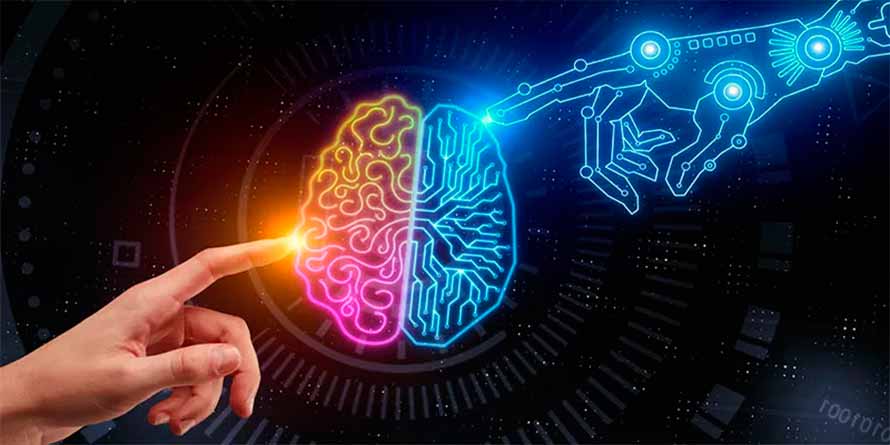Ads
Delving into the fascinating world of artificial intelligence can seem like a daunting task for many. However, once the mysteries behind its workings are unraveled, its impressive potential becomes apparent. 🌐🚀
Neural networks are one of the fundamental keys to understanding this cutting-edge technology. These complex structures, inspired by the human brain, are the driving force behind artificial intelligence's learning and adaptation capabilities. 🧠🔬
Ads
In this post, we'll dive deep into the architecture and operation of neural networks. We'll examine how they learn and adapt, how they process information, and how they're used to drive the most impressive advances in artificial intelligence. 🤖💡
Why is it important to understand neural networks? Not only do they help us appreciate the complexity and potential of artificial intelligence, but they also give us a glimpse into the future of technology and how it can change our lives. 🌐🚀
Ads
So, get ready for a journey of discovery, where we'll unravel the secrets of neural networks and explore the impressive engineering behind artificial intelligence. It's time to unravel the mystery and discover what's hidden under the hood of AI. 🕵️♀️🔍
Understanding Neural Networks
Neural networks are a branch of artificial intelligence (AI) inspired by the human brain. In technical terms, neural networks are algorithms used to recognize patterns. These patterns are interpreted, learned, and stored by the network.
A neural network consists of nodes, or "neurons," that are interconnected, allowing for the transmission of information. Each neuron has an input and an output, and these connect to other neurons to form a "layer." In a neural network, there are three types of layers: the input layer, the hidden layers, and the output layer.
Neural networks are trained through a process called supervised learning. This process involves presenting the neural network with a set of input data and the corresponding outputs. Through this training, the neural network adjusts the weights of the connections between neurons to minimize the error between the predicted and actual outputs.

How neural networks work
The operation of neural networks can be understood in three steps:
1. Feedforward propagation: In this step, the neural network takes a set of inputs, processes them through its hidden layers, and produces an output.
2. Feedback (backpropagation): Here, the network compares the produced output with the expected output, calculates the difference (the error), and propagates this error back through the network.
3. Weight adjustment: Finally, the network adjusts the weights of the connections between neurons based on the error calculated in the feedback stage. This process is repeated many times (epochs) until the error is sufficiently small.
Applications of neural networks
Neural networks have a wide range of applications today. Some of the most notable are:
- Voice recognition: Neural networks are used in virtual assistants such as Siri, Google Assistant, and Alexa to understand voice commands.
- Image recognition: Apps like Google Photos use neural networks to identify objects and people in images.
- Medical diagnosis: Neural networks are being used to diagnose diseases from medical images with accuracy comparable to that of medical professionals.
- Personalized recommendations: Companies like Netflix and Amazon use neural networks to offer personalized recommendations to their users.
Convolutional neural networks
Convolutional neural networks (CNNs) are a type of neural network commonly used for image processing. CNNs take an input image, process it through a series of filters (convolutions), and use this information to classify the image.
A unique feature of CNNs is that they are able to recognize spatial patterns in data, making them particularly useful for tasks such as object recognition and face detection.
Recurrent neural networks
Recurrent neural networks (RNNs) are another type of neural network used to process data sequences, such as time series or text. Unlike CNNs, which process data all at once, RNNs process data sequentially, allowing them to maintain a "state" or memory of what they've previously processed.
RNNs are used in a variety of applications, including speech recognition, machine translation, and text generation.
The future of neural networks
The future of neural networks is very promising. With the continued advancement of technology and increasing computing resources, we are likely to see even greater advances in the field of AI.
Among the most exciting areas of research are generative neural networks, which are capable of creating new images, sounds, and text from training examples. These networks could have applications in a variety of fields, from entertainment to medicine.

Conclusion
In short, neural networks are an essential and powerful branch of artificial intelligence that mimics the functioning of the human brain. Through forward propagation, feedback, and weight adjustment, these networks are able to recognize and learn from patterns, enabling them to perform tasks such as speech and image recognition, medical diagnosis, and personalized recommendations.
With technological advances, convolutional and recurrent neural networks have proven to be useful tools for processing images and data sequences, respectively. In the future, these technologies are likely to continue evolving and surprise us with even more amazing applications, such as generative neural networks that can create new images, sounds, and text.
Neural networks are driving some of the most exciting advances in the field of artificial intelligence. As we unravel more of the mysteries surrounding these networks, we can expect to see further development and innovative applications in diverse fields, from entertainment to medicine. Without a doubt, neural networks are the driving force behind the artificial intelligence revolution.



